#Tiffany Thayer
Text
BLOGTOBER 10/13-14/2023: THIRTEEN WOMEN, SVENGALI

I really loved this. I wonder what the book is like, I might have to read it! Author Tiffany Thayer sounds like a pretty interesting guy as per this collection of provocative reviews on Wikipedia:

I don't know about you, but that makes me want to read everything he wrote. THIRTEEN WOMEN concerns a circle of grownup sorority sisters who are beset by an anomalous series of murders and suicides. It so happens that all of the women recently received damning horoscopes in the mail from a self-styled New York Swami--but the Swami himself is just a pawn in a greater conspiracy masterminded by Ursula Georgi (Myrna Loy). The master hypnotist has a bone to pick with these smug society ladies, which I am about to spoil so plug your ears if you'd rather watch the movie first (and you should! It's only an hour long): As a half-Javanese girl "saved" by a missionary who sent her to a western finishing school, Ursula believed the key to her future was to pass for white. Therefore, she's vowed revenge on the racist sorority that rejected her in college, and honestly the revenge she has plotted should have earned her an honorary PhD. It's hard to imagine that either a 1930 novel or a 1932 movie really mean to say "fuck racism" so frankly, but the sharp premise and Myrna Loy's incredible charisma make it hard not to side with the ostensible villain in this picture.

Some people have remarked that THIRTEEN WOMEN is an early iteration of the slasher movie, with its female ensemble (of sorority babes no less) being picked off one by one. To me it was more reminiscent of the cursed media motif familiar to J-horror. Maybe I'm just saying this because I rewatched RINGU this Blogtober and I was encouraged by the documentarians behind THE J-HORROR VIRUS to consider its influence on SMILE, which I also rewatched, and which I'm realizing I love. The victims in THIRTEEN WOMEN have signed a round robin chain letter, for which they each receive a star chart describing their imminent doom; the power of suggestion takes the place of power tools here, with Ursula's sheer force of will acting as a free-floating contagion that rots the guilty and weak from the inside out. I was reminded of movies like RINGU and JU-ON as much as of Jorg Buttgereit's DER TODESKING, an experimental horror film about a chain letter that causes its recipients to self-destruct. It's fun to think that THIRTEEN WOMEN is a progenitor of movies like BLACK CHRISTMAS, but I see reflections of it elsewhere, too.

I wound up pairing this with SVENGALI just because they're both hypnosis movies, but that movie turned out to have its own racial tensions. In George du Maurier's foundational 1894 novel Trilby, the evil hypnotist is explicitly Jewish; in Archie Mayo's 1931 adaptation, Svengali is referred to abstractly as "Polish or something", which seems to be a euphemism for a Semitic Eastern European identity. This might not invite such analysis if it weren't for the styling of John Barrymore as a swarthy, rodent-like embodiment of greed. When I say that, it sounds pretty negative, but I'd still insist that SVENGALI is a great movie well worth seeing for its perverse humor, surprising grimness, expressionistic design (courtesy Anton Grot), and unusual horror elements--in addition to Barrymore's unforgettable performance.

I guess there has been some debate over whether SVENGALI is properly a horror movie, and I refer you to author Tony Burgess who once said that if you have to argue about whether or not something is a horror movie, then it's probably a horror movie. The only causes to argue are if you insist on an extremely narrow definition of horror to guide your personal consumer habits, or if you're squeamish about admitting that you've ever enjoyed or respected anything that falls under the horror umbrella (and I tend to think the latter case is more prevalent). Admittedly, SVENGALI blends comedy, romance, and musical elements such that the viewer is never quite sure how dark things will get until the very end, but I think that anyone should be able to see the horror in the incredible sequence of the eponymous villain sending his disembodied consciousness through the CALIGARI-like city to possess the unwitting Trilby (played by Marian Marsh who must have been the most adorable person alive at the time). A few different visual effects are used to evoke Svengali's power, some of which are still modern-looking and scary, and the film's breezy humor and charm do not promise any particular safety.

On some level, the aura of antisemitism and xenophobia itself lets us know we're in horrific territory. This is the genre of fears, rational and irrational, where we face whatever society perceives as threatening. Today we're in the midst of a lot of arguments about whether or not "separating the art from the artist" is ever appropriate, with full cancellation of the art AND artist positioned as the only alternative, but both of these options suggest that we must never have to face immorality, ambiguity, or ambivalence in art at all; we're forced to either avoid it or ignore it. This denies us the opportunity to understand what these darker emotions consist of, and understanding is the only way to defang them. Personally, I don't think it's any more helpful to condemn e.g. Dracula or the Wicked Witch of the West for their bigoted elements, than it is to simply pretend those things aren't there at all. SVENGALI provides us with a similar opportunity to confront antisocial phobias, with its troublingly caricaturesque villain and the unavoidable fascination one feels when his hypnotic gaze projects itself at us from the screen. Recommended viewing.

#blogtober#2023#horror#thriller#slasher#adaptation#racism#thirteen women#george archainbaud#tiffany thayer#myrna loy#svengali#trilby#george du maurier#archie mayo#john barrymore#marian marsh#pre-code#anton grot
18 notes
·
View notes
Text
'Thirteen Women' – Irene Dunne vs. Myrna Loy on Criterion Channel
Thirteen Women (1932) is a “Ten Little Indians”-style thriller set in a circle of sorority sisters whose planned reunion is marred with premonitions of death, murder, and suicide sent by a swami (C. Henry Gordon) whose astrological readings are all the rage in their society.
Irene Dunne is Laura Stanhope, the good girl center of the sorority society, and Myrna Loy is Ursula Georgi, the exotic…

View On WordPress
#1932#C. Henry Gordon#Criterion Channel#David O. Selznick#DVD#Florence Eldridge#George Archainbaud#Irene Dunne#Jill Esmond#Kay Johnson#Mary Duncan#Myrna Loy#Ricardo Cortez#Thirteen Women#Tiffany Thayer#VOD
1 note
·
View note
Text
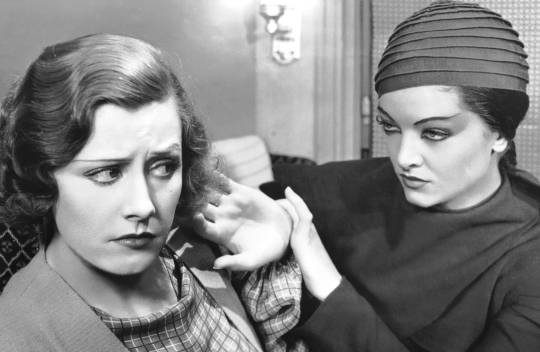
Irene Dunne and Myrna Loy in Thirteen Women (George Archainbaud, 1932)
Cast: Irene Dunne, Myrna Loy, Ricardo Cortez, Jill Esmond, Mary Duncan, Kay Johnson, Florence Eldridge, C. Henry Gordon, Peg Entwistle, Harriet Hagman, Edward Pawley, Blanche Friderici, Wally Albright. Screenplay: Bartlett Cormack, Samuel Ornitz, based on a novel by Tiffany Thayer. Cinematography: Leo Tover. Art direction: Carroll Clark. Film editing: Charles L. Kimball. Music: Max Steiner.
Myrna Loy was born Myrna Williams in Helena, Montana, but you wouldn't know it from the way Hollywood often cast her at the start of her career in the '20s and '30s. Her role in Thirteen Women is probably the purest example of her work as the stereotypical sinister Eurasian. She plays Ursula Georgi, whom the cop played by Ricardo Cortez scorns as "Half-breed type. Half Hindu, half Javanese, I don't know." (Actually, Cortez himself knew something about crossing ethnic lines: He was born Jacob Krantz in New York, but Hollywood changed his name to capitalize on the vogue for Latin lovers like Rudolph Valentino and Ramon Novarro, and later claimed first that he was French and later that he was born in Vienna.) Ursula seeks revenge on the women who belonged to a sorority at a girls' college and blackballed her when she sought admission. She seeks out a phony seer known as Swami Yogadachi (C. Henry Gordon), whose horoscope readings the girls sought out, and hypnotizes him into sending them poison-pen readings that predict dire events. Two of the girls, the sisters June (Mary Duncan) and May Raskob (Harriet Hagman), have become trapeze artists, and June is so unnerved by the fake reading that she lets May fall to her death during a stunt and goes mad as a consequence. As others fall prey to Ursula's schemes, some of the survivors gather at the home of Laura Stanhope (Irene Dunne), who thinks that their hysteria over the deaths is absurd. Laura is the single mother of a son, Bobby (Wally Albright), who is one of those cloyingly cute movie children -- he calls her "Mumsy." But even Laura's calm vanishes when Ursula makes Bobby her next target. In addition to being stupidly racist, the movie is sheer hokum, a cockamamie blend of revenge thriller and police procedural, and it was not much of a success at the box office, even after RKO cut 14 minutes from it after test screenings -- one of the reasons why we learn the fates of only 10 of the 13 women. One of the performances cut to only four minutes was that of Peg Entwistle, who played Hazel, the one who kills her husband and goes to prison. Entwistle was reportedly so despondent about her movie career that she climbed to the top of one of the letters on the Hollywood sign (reports vary on whether it was the H or the D) and jumped to her death. As for Loy, this was her last outing as a Eurasian vamp: The Thin Man (W.S. Van Dyke, 1934) changed her screen image to that of the witty and soignée wife, most often of William Powell.
22 notes
·
View notes
Note
So I've not watched Thirteen Women (I am interested though) but from the sounds of things it's one of those movies with a good message but poorly executed, right? Is your appreciation of Ursula a reclamation sort of thing, like how there are trans fans of Angela from Sleepaway Camp?
honestly, yeah. ursula was fuckin’ based. i don’t think the writers meant for it to have a message. tiffany thayer only made the book to shock and titillate middle-class audiences, and it was only made into a movie because the book was so successful, but it really does have some great points— completely unintentionally! anyways, here’s YOUR myrna picture
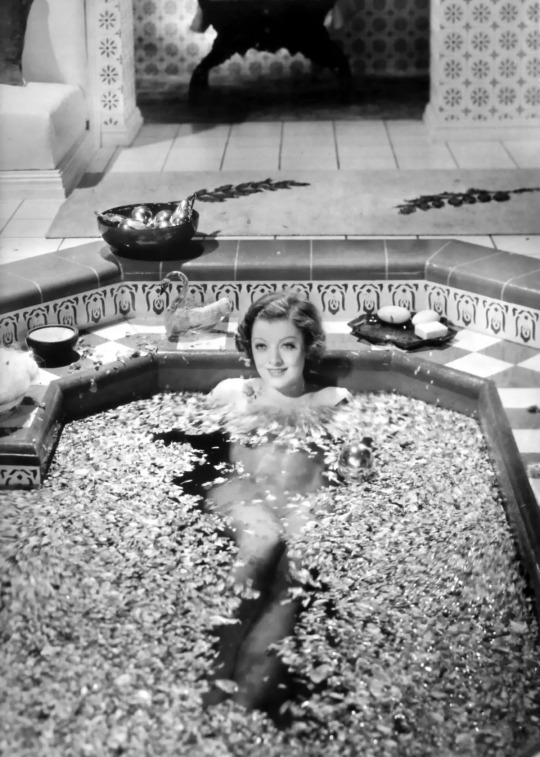
this one comes from a movie called the barbarian. there’s plenty of other great screencaps of her from this scene, but i can’t show them here. not unless i want tumblr to mark this post as mature!
3 notes
·
View notes
Photo
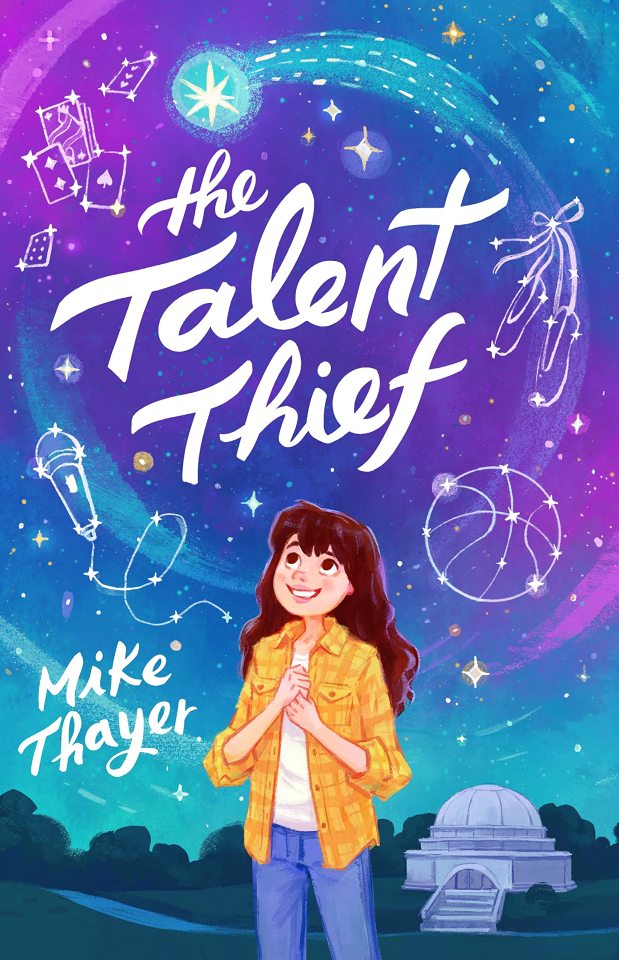
Rating: 5/5
Book Blurb: A girl with the ability to borrow other people’s talents must use her powers to find her own spotlight in The Talent Thief, a wish-fulfilling middle-grade novel from Mike Thayer, the author of The Double Life of Danny Day.
Tiffany Tudwell is cursed. She once tripped over a backpack and fell face-first into a trashcan. She had pink eye on picture day. One time she tried to hold back a sneeze and farted on the cutest boy in class. She longs for the spotlight, but it’s safer to stay hidden in the shadows where the curse can't reach her and no one can make fun of her.
Until the night two meteors collide over her backyard giving Tiffany the ability to steal people’s talents for a day—like stealing mean girl Candace’s beautiful singing voice in the middle of play rehearsal, or drawing an incredible self-portrait after borrowing the teacher’s pencil. Her power even gets the attention of the most popular boy in school, the smooth-talking Brady Northrup.
But her powers can’t solve everything—or can they? When a local philanthropist announces a fundraiser contest, Tiffany, with Brady’s help, decides to use her powers to save her dad’s failing planetarium. And maybe discover her own talent along the way...
Review:
A girl who believes she’s been cursed with bad luck suddenly finds herself with the ability to borrow people’s talents for a day and everything in her life is about to change as she tries to save her father’s planetarium. Tiffany Tudwell believes she’s been cursed, after her beloved grandmother has died Tiffany has had the worst luck from tripping on things to embarrassing herself and so much more. She’s had a rough year and it does not help that her bully has it out for her. When two meteors collide over her backyard and stardust falls on top of her and she makes a wish... Tiffany finds that she can steal people’s talents for a day. With this new found ability she can enter into a contest that could save her dad’s failing planetarium. Along the way she’ll receive help from an unlikely person, the cutest boy in school who is hiding his own motives, her friends in the Video Game Club, and her senior friends... and maybe just discover that despite all these powers and talents, what she truly needs is to discover her own talent and that her own talent will be the thing that saves the day. This was a super cute and magical story about growing up and about finding your own inner strength and talent. Tiffany has a lot to deal with but she’s always trying and is a really sweet protagonist. I love that we get to see her grow in her confidence and stand up against her bully as well as become more open to friendship.
*Thanks Netgalley and Macmillan Children's Publishing Group, Feiwel & Friends for sending me an arc in exchange for an honest review*
3 notes
·
View notes
Photo

One Woman. Tiffany Thayer. New York: William Morrow and Co., 1933. First edition. Original dust jacket.
“Not a shocker -- nor yet pallid fare for the uninitiated. Closer to THIRTEEN MEN than to anything else Tiffany Thayer has done. And once again evidence of the man's originality and ability to weave a good yarn. The style is usually good reporting, occasionally sheer tabloid stuff, sometimes verging on hysteria, but it literally sizzles with life. It's a rapid fire story of a reporter's curiosity and where it led him, when he picked up the address book belonging to a dead woman, and proceeded to investigate the notations contained therein. It led him to gangsters, bankers, prize fighters, pawn shops, call women and eventually cost him his job and his life. Watch your step in selling or renting. Should gain him new readers.” -- Kirkus Review
19 notes
·
View notes
Photo



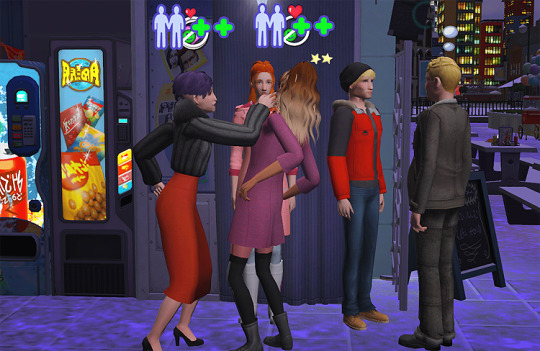

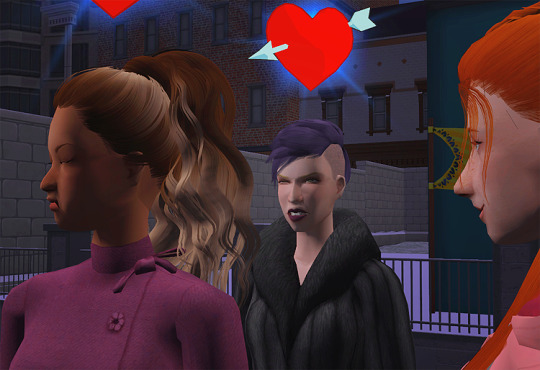

PVWT: Uni Years | Sophomore | Pleasant❄️
Meadow: Well hello there gorgeous, what’s your name?
Tiffany: Haha, it’s Tiffany, but most people call me Tiff.
Meadow: Wanna hangout with us, Tiff. We were just about to head back to Angie’s...We’d really love to have you join us.
Tiffany: *blushing* Oh, I--sure, why not.
Tosha: What the hell, what the hell, what the hell.
Meadow: Tiff says she’ll join us.
Angela: That’s great, babe.
Tosha: Is this seriously happening right in front of me?? You don’t even KNOW her!
Meadow: Alright, we should get going--
Tosha: Not so fast! What is this?? I can’t believe you--
Meadow: Tosh--?
Angela: Oh My Watcher!
Tosha: How could you do this to me?
Meadow: Tosha you know I’m seeing Angela!
Tosha: Not talking about Angela. Her. You don’t even know her.
Meadow: Tosha...I’m sorry but we’ve talked about this. You said you were cool with me seeing other people.
Tosha: I thought that just meant Angela.
Meadow: Well...it doesn’t. I--I have to go.
#sims 2#maxis premades#pleasantview#pleasantview with a twist#pvwt#pvwt: yr1#yr1: winter#pvwt: uni years#pvwt: SSU#pvwt: Pleasant#pvwt: Pleasant Gen 2#pvwt: Angela Pleasant#pvwt: Meadow Thayer#pvwt: Tosha Go#pvwt: Tiffany Sampson
40 notes
·
View notes
Photo


Meadow threw a party and invited all family friends, including Don who's bffs with Angela and Dustin. Before the party started Tiffany brought Tara from work (they're both in the medicine career) but, unlike Don, she's not a party person and went straight to the bed sleep (so random). I don't know how he became friends with all these sims, I guess he's afraid of growing old lol.
#pleasantview 1#pv1: don lothario#pv1: tara kat#pv1: angela pleasant#pv1: dustin broke#pv1: meadow thayer#pv1: tiffany sampson#the sims 2
11 notes
·
View notes
Photo
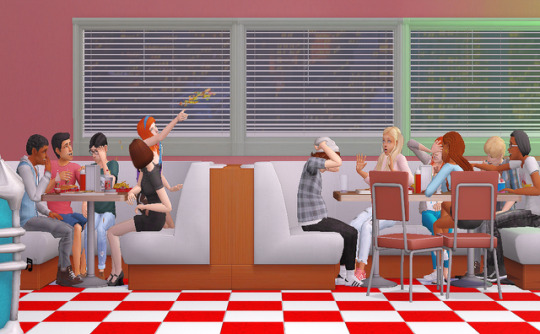

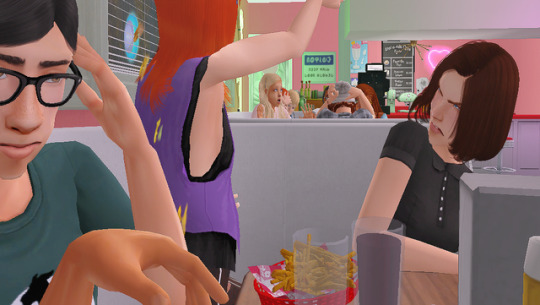
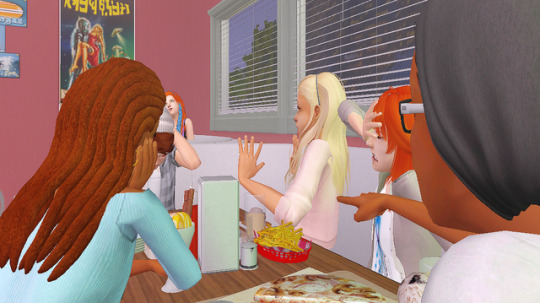

“The day Lilith was a hero” according to some people.
#angela pleasant#lilith pleasant#martin ruben#joshua ruben#dirk dreamer#dustin broke#tiffany sampson#meadow thayer#sophie miguel#sam thomas#mickey dosser#money honey#ts2#sims 2#the sims 2#Pleasantview
369 notes
·
View notes
Photo

Isn’t a breakfast engagement, still in your PJs, the most romantic thing?
6 notes
·
View notes
Photo

endpapers Thirteen Men by Tiffany Thayer
Illustrated by Mahlon Blaine
Thirteenth Printing, June 9, 1931
44 notes
·
View notes
Photo
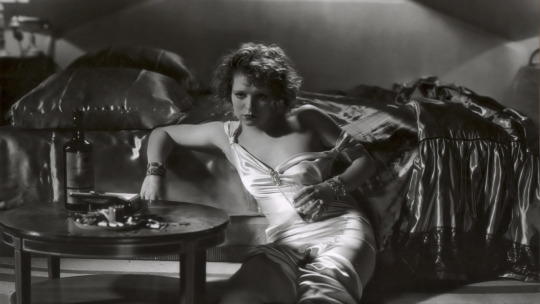
Savage Cinema.
From anarchists and adultery to milk baths and massacres, Matthew Turner shares five of the weirdest and wildest highlights of Hollywood’s pre-Code era, as #PreCodeApril comes to a close.
Pre-Code April was directly inspired by Noirvember, a month-long celebration of noir cinema instigated by Marya Gates (Oldfilmsflicker). I did Noirvember for the first time in November 2019, really enjoyed it, and thought it would be great to do the same thing for pre-Code movies. Although I’ve watched most of the classic 1930s films, I realised there were a huge number of pre-Code films I’d never seen (of my Letterboxd list of over 900 Pre-Code films, I have only seen 200).
As a sucker for a bit of wordplay, no matter how tenuous, I picked April partly because it’s six months away from Noirvember and partly because of the shared “pr” sound in April and Pre-Code. I’ve been absolutely delighted by the response—the #PreCodeApril hashtag on Twitter is a daily treasure trove of pre-Code-related joy, but I was genuinely thrilled to see the response on Letterboxd (here is my watchlist for the month). It’s been a real pleasure to see pre-Code movies constantly popping up in my ‘new from friends’ feed. My hope is that it’ll be even bigger next year—and that maybe TCM will want to get involved, the way they do with Noirvember.
Produced between 1929 and 1934, pre-Code cinema refers to films made in a brief period between the silent era, and Hollywood beginning to enforce the Motion Picture Production Code censorship guidelines (mandatory enforcement came in from July 1934). The “Code” in question was popularly known as the Hays Code, after then MPPDA president Will H. Hays. As the depression set in and box office declined, theater owners needed fare that would drive cinema-goers to the movies. It was a wild time to be a scriptwriter; they threw everything at the page, designers added even more, and actors played out the kinds of scenes, from the suggestive to the overt, that would otherwise be banned for decades to come.
The following five films demonstrate some of Hollywood’s craziest pre-Code excesses. They’re still jaw-dropping, even by today’s standards, and notably give female characters an agency that would be later denied as the Christian morals of the Code overruled writers’ kinks.

Madam Satan (1930)
Directed by Cecil B. DeMille, written by Elsie Janis, Jeanie Macpherson and Gladys Unger
A critical and commercial flop in 1930, Cecil B. DeMille’s utterly insane musical comedy stars Kay Johnson as a straight-laced wife who plots to win back her unfaithful husband (Reginald Denny) by seducing him at a costume party, disguised as a mysterious devil woman. The location of this party? Oh, nothing too fancy, just on board a giant zeppelin. (“Madam Satan or: How the Film gets Fucking Crazy on the Blimp,” as Ryan reviewed it.)
Madam Satan is not by any stretch of the imagination a good movie (the editing alone is laughably bad), but as a piece of pre-Code craziness, it really has to be seen to be believed. Co-written by a trio of women and set in just three locations, it goes from racy bedroom farce to avant-garde musical to full-on disaster movie after a bolt of lightning hits the blimp.
The film is justly celebrated (in camp classic circles, at least) for the wildly over-the-top costumes paraded in the masquerade ball sequence, but there’s weird outfit joy everywhere you look. Keep an eye out for an enterprising extra who’s come dressed as a set of triplets.

Call Her Savage (1932)
Directed by John Francis Dillon, written by Tiffany Thayer and Edwin J. Burke
Adapted from a salacious novel by Tiffany Thayer, Call Her Savage was former silent star Clara Bow’s second-to-last film before her retirement at the age of 28. She plays Texas gal Nasa Springer, who’s always had a “savage” temper she can’t explain. In the space of 88 minutes she goes from wild teenager to jilted newlywed to young mother to prostitute to wealthy society girl to alcoholic before finally (it’s implied) settling down with her Native-American friend after discovering that she’s half-Native-American, something the audience has known all along.
Bow’s performance is frankly astonishing, to the point where you simply can’t believe what you’re seeing from one moment to the next. Sample scenes see her savagely whipping both a snake and her Indian friend, smashing a guitar over a musician’s head and violently wrestling her Great Dane… and that’s all in the first five minutes. She’s also frequently in a state of near undress throughout—one funny scene has her maids chasing her with a dressing gown because they’re afraid she’ll run down the street in her négligée.
The rest of the film includes alcohol, adultery, strong violence, attempted rape, murder, syphilis (not named, but heavily implied) and baby death. It’s a veritable smorgasbord of outrageous content and Bow is pure dynamite throughout. The film is also noted for being one of the first on-screen portrayals of homosexuality, when Nasa visits a gay bar in the Village frequented by “wild poets and anarchists”.

Smarty (1934)
Directed by Robert Florey, written by Carl Erickson and F. Hugh Herbert
This deeply problematic sex comedy features pre-Code stars Joan Blondell and Warren William (often nicknamed ‘The King of Pre-Code’) at their absolute filthiest. Blondell plays Vicki, a capricious, happily married wife who gets an obvious kick out of taunting her husband, Tony (William). When he cracks and slaps her at a party, she divorces him and marries her lawyer, Vernon (Edward Everett Horton), whom she also goads into slapping her in a deliberate ploy to win back Tony.
Essentially, Smarty hinges on Vicki liking rough sex and it’s completely blatant about it, ending with her sighing “Hit me again” (the film’s UK title!) as they sink into a clinch on a couch, a rapturous expression on her face. It’s a controversial film because on the surface it looks like it’s condoning domestic violence, but it’s very clearly about Vicki’s openly expressed sexual desires—she wants to be punished and dominated, she just has a rather dodgy way of getting what she wants.
It might be unsophisticated, but in some ways Smarty is remarkably ahead of its time and ripe for rediscovery. To that end, it would make a fascinating double bill with Stephen Shainberg’s Secretary (2002). Oh, and it’s also chock-full of lingerie scenes (like most pre-Code films), if you like that sort of thing.

Massacre (1934)
Directed by Alan Crosland, written by Sheridan Gibney, Ralph Block and Robert Gessner
Several pre-Code films (notably those made by Warner Bros) took a no-punches-pulled approach to their depiction of social issues, and star Richard Barthelmess actively sought out such projects. Here he plays Joe Thunderhorse, a Native American who’s become famous on the rodeo circuit. When he returns to his tribe to bury his father, he ends up fighting for their rights, taking on corrupt government officials and religious authorities.
Massacre is fascinating because on the one hand it’s wildly insensitive—Barthelmess and co-star Ann Dvorak are both cast as Native Americans—but on the other, it burns with a righteous fury and does more than any other Hollywood film (before or since) to champion the rights and highlight the injustices dealt out to Native Americans. That fury is encapsulated in a horrifying and rightly upsetting rape scene (it happens off-screen, but the cuts leave you in no doubt) that the film handles with surprising sensitivity.
In addition to being a passionate fight against racism and social injustice, the film also has some genuinely shocking sexual content. Most notably, Joe is seen making love to a rich white woman (Claire Dodd, who’s also in Smarty) who has an obvious sexual fetish, flaunting him in front of her friends and making a shrine in her room with Native-American paraphernalia.

The Sign of the Cross (1932)
Directed by Cecil B. DeMille, written by Waldemar Young and Sidney Buchman
Yes, this is Cecil B. DeMille again, but no list of weird and wild pre-Code films would be complete without the jaw-dropping ancient Rome epic, The Sign of the Cross. Adapted from an 1895 play by Wilson Barrett, it stars Frederic March as Marcus Superbus (stop sniggering at the back there), who’s torn between his loyalty to Emperor Nero (Charles Laughton) and his love for a Christian woman (Elissa Landi), while also fending off the advances of the Emperor’s wife, Poppaea (Claudette Colbert).
The film is racy enough in its sexual content alone: highlights include the famous scene of Claudette Colbert taking a nude milk bath and an erotic “lesbian” dance sequence, where Joyzelle Joyner’s “most wicked and talented woman in Rome” does ‘The Dance of the Naked Moon’ at Frederic March’s orgy, trying to tempt Landi’s virtuous Christian, to the obvious arousal of the gathered guests.
However, it’s the climactic gladiatorial-arena sequence that will leave your jaw on the floor. Lasting around twelve minutes, it includes: someone getting eaten by a tiger, a tied-up, naked women being approached by hungry crocodiles, pygmies getting chopped up by female barbarians, elephants stomping on heads, a gorilla approaching a naked woman tied to a stake, a man getting gored by a bull, and gladiators fighting to the death, complete with blood and gory injury detail.
The whole thing is genuinely horrifying, even for 2021. Best of all, DeMille pointedly critiques the audience (ourselves included), by showing a series of reaction shots ranging from intense enjoyment to abject seen-it-all-before boredom.
Matthew Turner (FilmFan1971) is a critic, author, podcaster and lifelong film fanatic. His favorite film is ‘Vertigo’. The films in this article are also listed here: Five of the Pre-Code Era’s Most Outrageous Films.
#preCodeApril#pre code april#precode april#hays code#mppa code#cecil b demille#clara bow#matthew turner#letterboxd#1930s films#1920s films#depression films
42 notes
·
View notes
Note
if you could adapt thirteen women, would you rather do a new adaptation of the book, or a remake of the movie?
remake of the movie! the book kinda sucked. like, tiffany thayer only wrote it as a pulpy shockfest. he was like “look over here— there’s adultery! look over here— there’s drug addiction! look over here— there’s lesbians!” and he threw in all kinds of things that would shock his mostly white, mostly middle-class audience. but a remake of the movie? that’s got some potential.
anyways, here is YOUR myrna picture— this one’s actually from thirteen women!
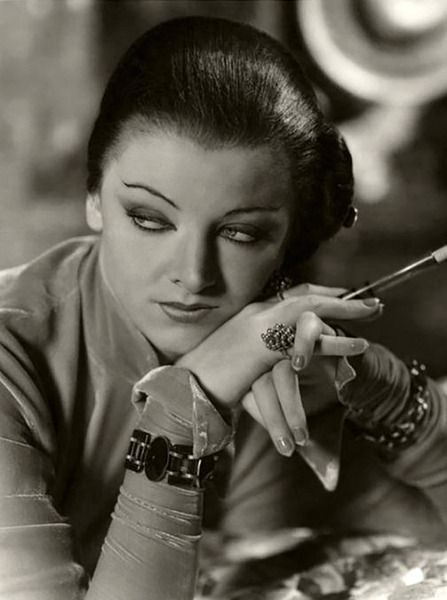
if the writers didn’t want us to root for ursula, why’d they give her the best outfits in the movie?
2 notes
·
View notes
Photo
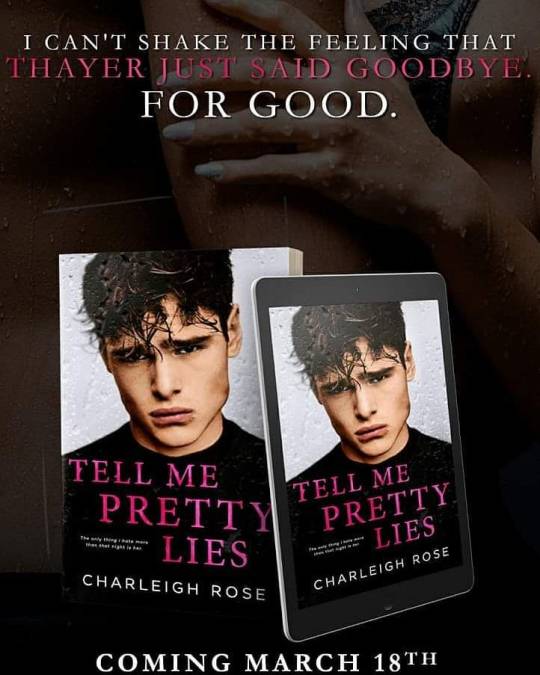
TELL ME PRETTY LIES by @charleighrose is coming March 18th!! Read an excerpt here: https://wp.me/pax1MW-1zd Blurb: Three things my mother acquired when she became engaged: 1. A brand new Tiffany’s ring. 2. A lavish home on Heartbreak Hill. 3. Three privileged stepsons. The last thing I expected was to fall for one of them, least of all Thayer Ames. Beautiful, brooding, and untouchable. I knew it was a bad idea. He warned me himself. But he was a thunderstorm, and I never could resist the rain. It was perfect… Until it wasn’t. One night was all it took for our world to crumble around us, leaving only secrets and lies between us. Now, I have to face him again, and the boy I used to know has become the man who loves to hate me. https://www.instagram.com/p/B9j8S2YAtNz/?igshid=1wii76nuv5xjs
2 notes
·
View notes
Text
Doctor Arnoldi by Tiffany Thayer #BookReview
"This book, written in 1934, is flamboyant, memorable, and just f*cking weird. " Doctor Arnoldi by Tiffany Thayer ~ a #scifi novel ~ #BookReview by Lilyn G
After an explosion in a New York subway, five men are buried in rubble. Three hours later they are dragged from it, miraculously still alive. At the hospital, newspaper reporter Happy Suderman learns that no-one else has died there since noon, and a few phone calls turn up no other reports of death across the country. Happy is the first to realize that no matter how badly ill or injured they are…
View On WordPress
#classic science fiction#classic science fiction novels#doctor arnoldi#scifi must reads#tiffany thayer
0 notes